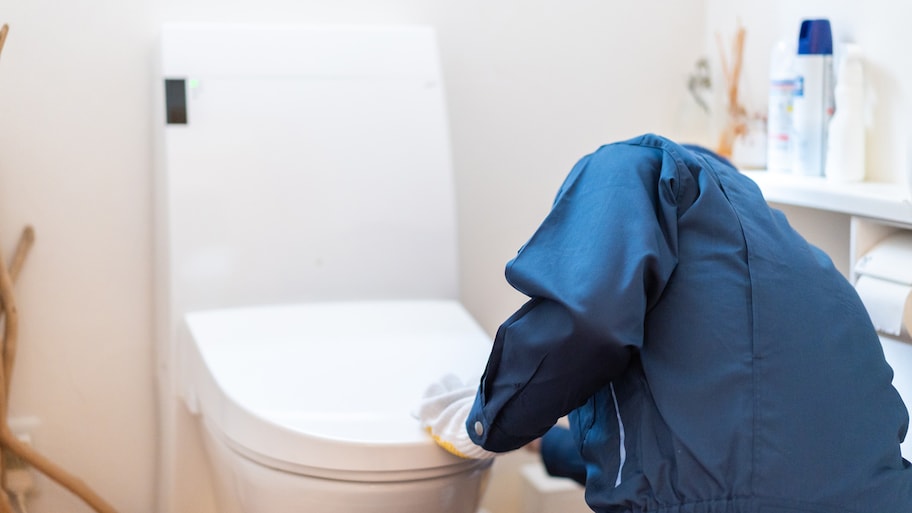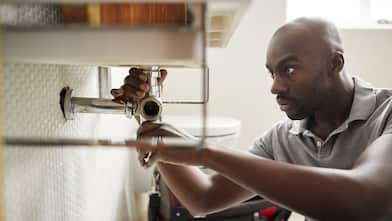Simple
2/5 Flex your DIY muscles.
2 hours
1 to 2 hours
What you'll need:
TOOLS
- Screwdriver
- Adjustable wrench
- Adjustable pliers
- Toilet seat stabilizer kit
- Power drill and drill bits
SUPPLIES
- Sanitary wipes or disinfectant and a rag
- Plastic gloves
Tighten the Toilet Seat from Above
Your toilet seat is connected to the back of the bowl's base with one or two long screws or bolts. You should find two plastic caps covering them. Remove these with your fingers or a flathead screwdriver if they're old or jammed.
Tighten the bolts or screws on both sides by turning clockwise. Make sure to turn each an even amount to avoid an imbalanced toilet seat.
Tighten the Toilet Seat from Below
Look for your toilet seat nuts underneath the bowl on either side. Use an adjustable wrench to tighten the bolts holding them on. If space is tight, you may need to use a ratchet wrench. This troubleshooting step may come into play if your toilet is old, the bolts or screws won't turn, or the above step didn't fix the issue.
If tightening both bolts doesn't help—or the bolts aren't turnable—it's probably worth investing in a new toilet seat, which starts around $20 at home improvement stores.
Install Toilet Seat Stabilizers
Once you fix the issue—or if you need to spring for a replacement seat—be proactive by installing seat stabilizers underneath the bowl. These will help keep your toilet seat from getting wobbly in the future. All that wobbling is likely the cause of the toilet seat slamming down several times a day. Over time, this force loosens the nuts and screws.
A toilet seat stabilizer kit costs under $5 at home improvement stores. Follow the manufacturer guidelines. Start by drilling a small starter hole, and then secure the rubber strips onto both sides of the toilet.
Another option: you might choose to install a slow-close toilet seat to reduce impact. These types are available for $20 to $50 at home improvement stores.
Shim Your Toilet (Not the Seat)
If you know the floor is a little uneven, that could be another reason you have a perennially loosened toilet seat. If this is the case, installing shims underneath can help. A pack of four toilet shims costs around $4 and can be easily installed underneath the base of your toilet to help level gaps or uneven spaces.
Ask a Plumber for Guidance
If all else fails, a local plumber can inspect your toilet's situation and give additional guidance. This pro visit may include recommendations for installing the best toilet seat for your home, such as installing a low flow energy-saving toilet or adjusting the toilet height for your needs. Or it may be more comprehensive and require a pro to inspect your pipes and check for leaks.





